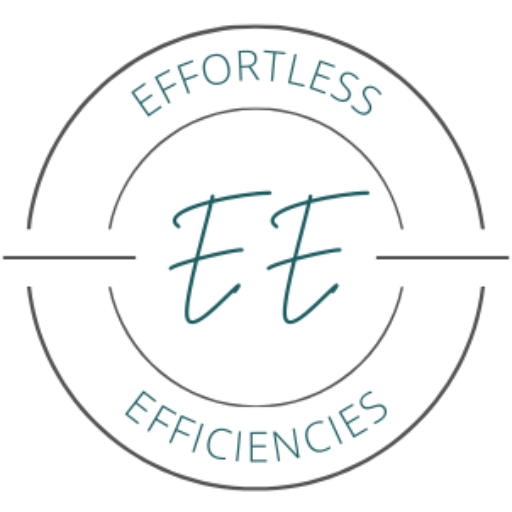Keeping your home organized with ADHD isn’t about forcing yourself into a strict system—it’s about designing a space that works with your brain, not against it.
Instead, ADHD-friendly home organization should focus on reducing friction, making things easy to see so we don’t forget, and making things as effortless as possible. Here are the top ADHD home organization tips to help you simplify your space and daily routines.
Use ADHD-Friendly Storage Solutions
Let’s start with the basics, these rules should apply to all home organization and storage for ADHDers. Storage needs to be easy, visible, and accessible for ADHD brains. If an item is stored in a drawer you never open, it basically doesn’t exist.
Best ADHD-Friendly Storage Ideas:
🔹 Hooks over hangers – Reduces the effort of putting things away.
🔹 Floating shelves – Keeps frequently used items visible and off surfaces.
🔹 Clear bins and labeled baskets – If you can’t see it, you’ll forget it’s there. Transparent storage containers let you instantly see what’s inside.
🔹 Rolling carts – A mobile storage solution for art supplies, toiletries, or office materials.
🔹 Over-the-door organizers – Great for shoes, snacks, toiletries, or accessories.
🔹 Tabletop trash bins – If you frequently leave small trash (tissues, receipts, wrappers) in one spot, add a mini trash bin instead of expecting yourself to walk to the trash can.
When storage is simple and intuitive, organization becomes second nature.
Now, for more specific organization hacks, these our our favourites;
Use Google Home or Alexa to Simplify ADHD Organization
Smart home devices like Google Home can make organization easier, faster, and more accessible for ADHD brains.
How Google Home Can Help With ADHD Organization:
✅ Voice-Activated Lists – If your hands are full or you’re afraid you’ll forget, just say “Hey Google, add eggs to my grocery list” or “Hey Google, remind me to call the doctor at 3 PM.” Google Keep can sync these lists across your phone and other devices.
✅ Smart Lights & Devices – Control lights, plugs, and appliances with voice commands. This is a game-changer if you finally sat down after getting up 10 times and need to turn the lights off without moving AGAIN.
✅ Routines & Reminders – Set daily or weekly routines like “Hey Google, remind me to check my pill organizer every morning” or “Hey Google, tell me what’s on my to-do list.”
✅ Checking If You Turned Things Off – If you leave the house and worry about whether you turned something off, smart plugs or connected devices let you check and turn them off remotely.
For ADHD brains, having a voice-activated assistant reduces mental load and makes organizing feel effortless.
Create Stations Based on When You Use Them
Instead of storing things by category alone, group items based on when and where you actually use them. This prevents running around the house looking for what you need.
✅ Tea or Coffee Station – Keep mugs, tea bags, coffee, sugar, and a spoon in one spot near the kettle or coffee maker.
✅ Medication Station – Store daily vitamins and medications in a labeled container near your morning routine area (like the bathroom sink or coffee station).
✅ Workstation – Keep chargers, notebooks, pens, and headphones in a small tray or organizer where you work.
✅ Self-Care Kit – Put skincare, lip balm, or fidget items in a designated basket where you relax.
By setting up functional stations, you reduce the mental load of finding what you need.
Keep Your Meds Where You Need to Take Them
ADHD brains thrive on visual reminders, so if your medication is stored out of sight, there’s a high chance you’ll forget to take it.
✅ Store meds in the place where you take them – If you take them in the morning, put them by your coffee maker or toothbrush. If you need to take them at lunch, keep a small container in your bag.
✅ Use a weekly pill organizer – A 7-day pill container makes it easy to track whether you’ve taken your dose. If the day’s slot is empty, you know you took it.
✅ Set an alarm or habit-stack it – If remembering meds is a struggle, pair it with something you do daily (like taking them right before brushing your teeth).
Making medication management as friction-free as possible keeps you on track.
The One-Motion Rule
If a task takes too many steps, it’s unlikely to happen consistently. That’s why ADHD-friendly organization follows the One-Motion Rule:
🔹 The fewer steps it takes to put something away, the more likely you’ll do it.
How to Apply the One-Motion Rule:
✔ Hooks instead of hangers – Grabbing a hanger, putting it on the rod, and straightening clothes takes multiple steps. A hook? One motion.
✔ Open baskets instead of closed storage – Lifting a lid or opening a drawer is extra effort. Open baskets let you toss things in quickly.
✔ Drop zones for everyday items – Keys, wallets, and sunglasses go in a designated spot right where you naturally drop them instead of scattered across the house.
✔ Labels that are easy to read – If it takes effort to figure out where something belongs, you’re less likely to put it back. Bold, clear labels help.
The Power of Labeling for ADHD Organization
Labelling is a general one we hear all the time but sometimes its importance is underestimated. Labels are one of the most effective ADHD-friendly home organization tools because they provide instant clarity, reduce decision-making fatigue, and make it easier to put things back in their place.
Best ways to Use Labels for ADHD Organization:
✅ Label everything,EVEN IF IT SEEMS OBVIOUS – When everything has a clear, visible name, you don’t have to waste mental energy figuring out where something belongs.
✅ Use large, bold fonts – ADHD brains process visual information quickly, so labels should be big, bold, and easy to read from a distance.
✅ Color-coded labels for categories – Assign colors to different groups (e.g., blue for office supplies, green for cleaning items, yellow for daily-use essentials).
✅ Stick labels on shelves, bins, and drawers – Labeling isn’t just for storage bins—put labels on shelves, inside cabinets, and on drawer fronts so you always know where things go.
✅ Temporary labels for testing systems – If you’re unsure about a storage setup, use sticky notes or dry-erase labels to see if the system works before committing.
When labeling removes the guesswork, it becomes much easier to keep your space organized.
ADHD-Friendly Home Organization That Works for You
By reducing friction, making storage more accessible, and designing systems that match how your brain functions, you can keep your home organized in a way that actually works for you.
What’s one small change you can make today to make your home more ADHD-friendly? Let me know in the comments!

